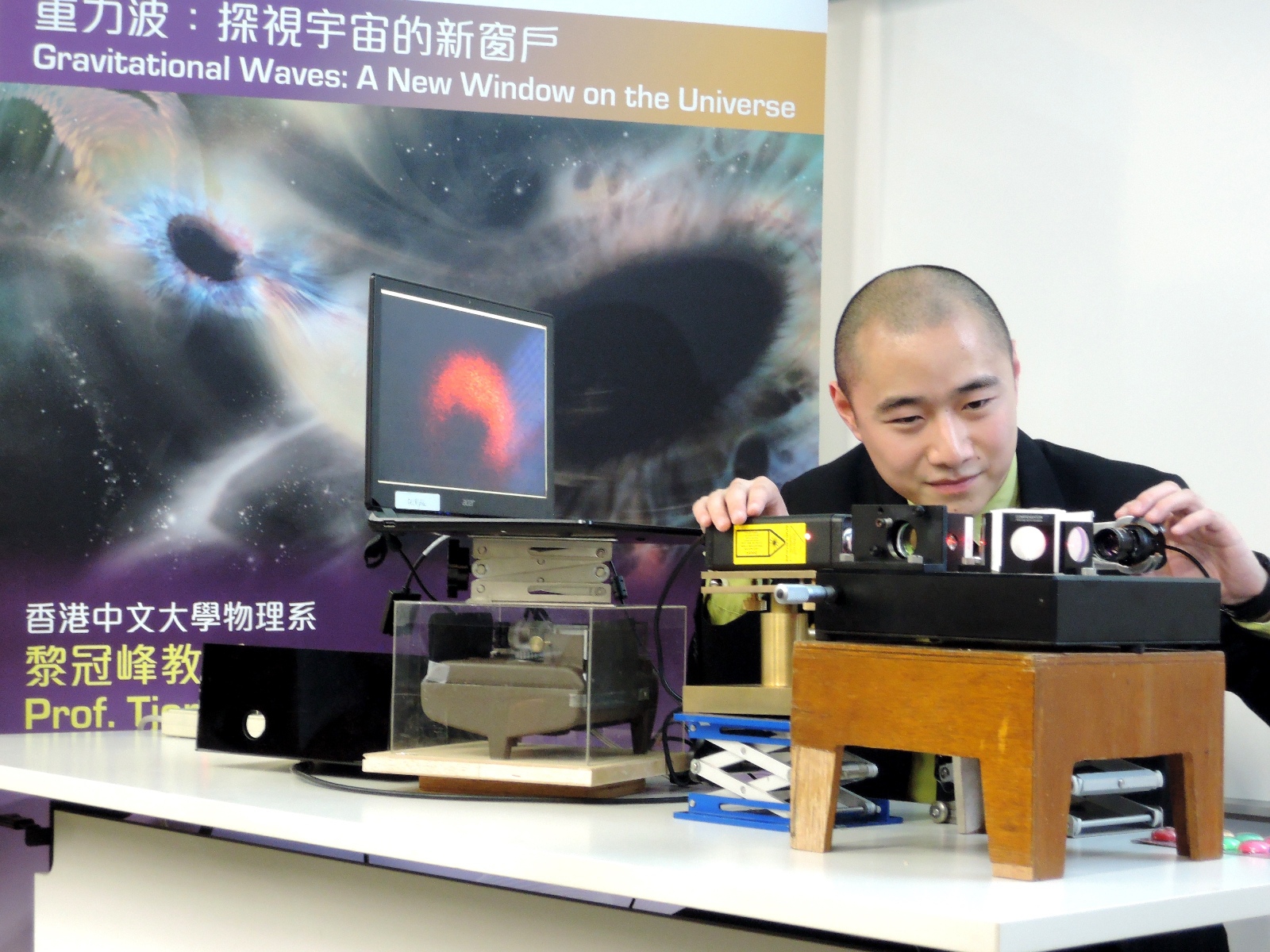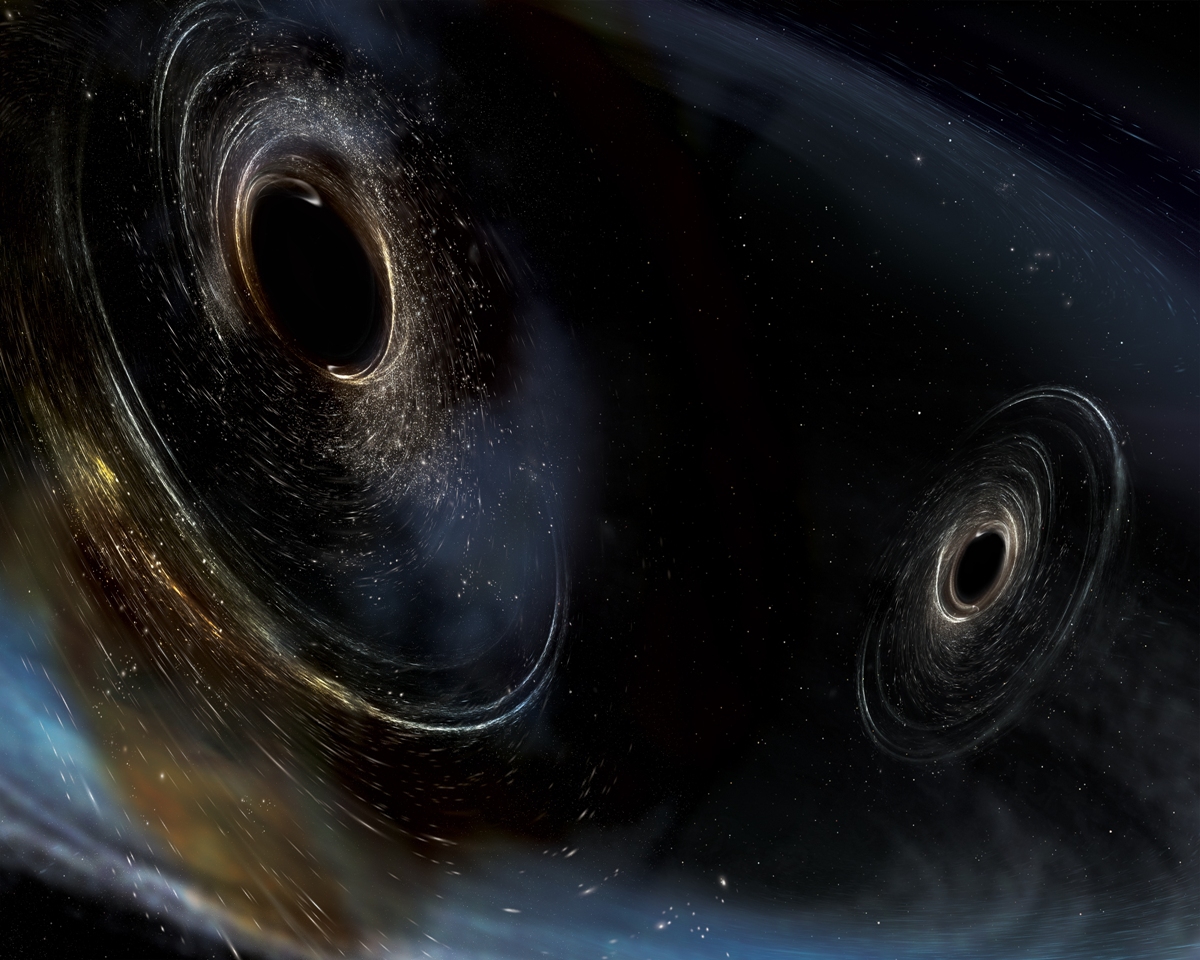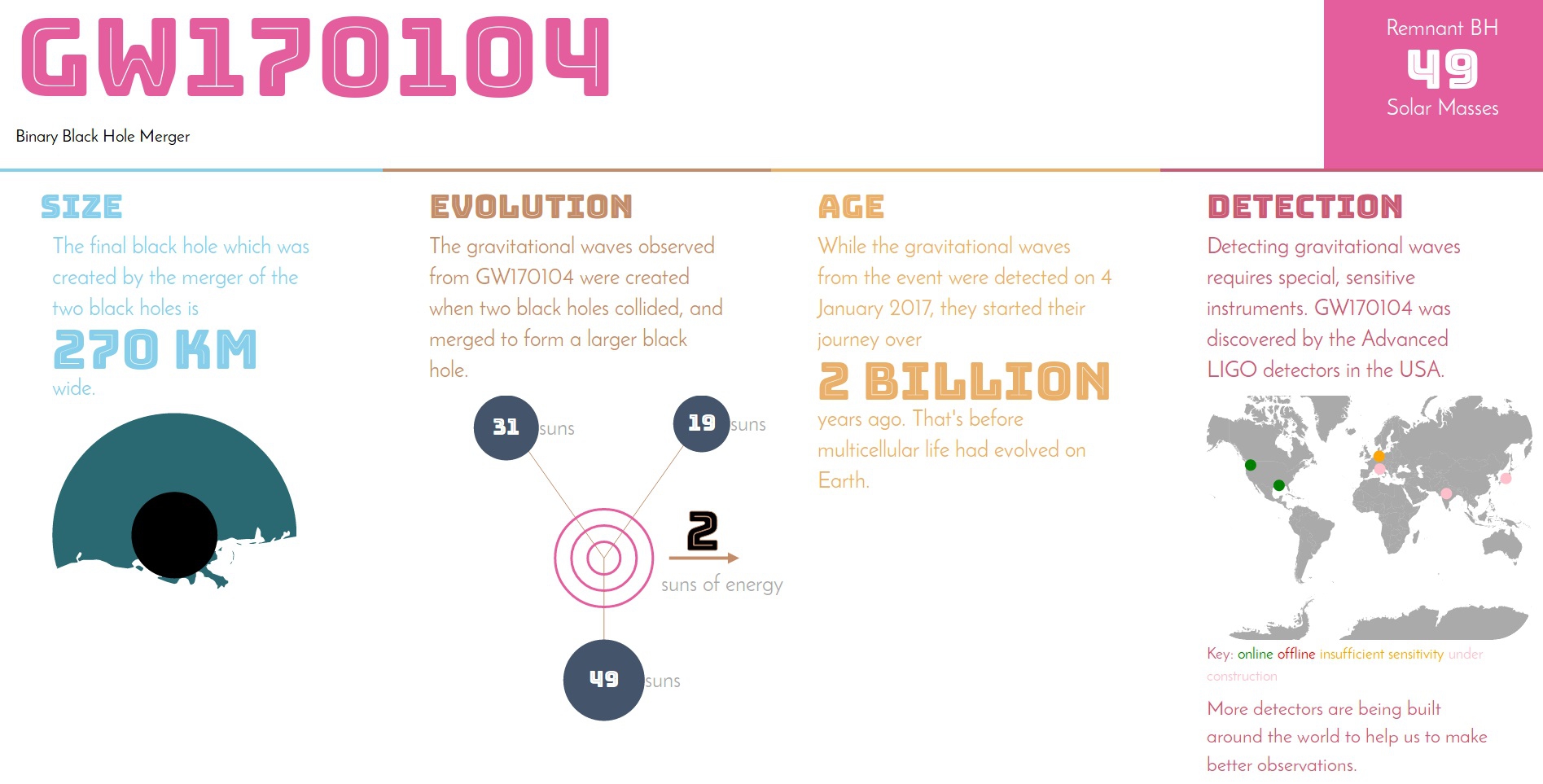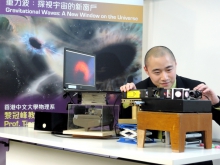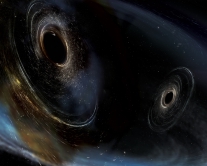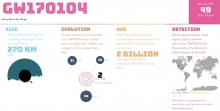CUHK
News Centre
LIGO Detects Gravitational Waves for Third TimeUnveils Hints on Formation of Black Holes
The Laser Interferometer Gravitational-wave Observatory (LIGO) has made a third detection of gravitational waves. The waves were generated from the collision of two black holes which were 19 and 31 times the mass of the Sun and ultimately formed a black hole that is 49 times heavier than the Sun. This detection appears to be the farthest yet, with the black holes located about 3 billion light-years away. Prof. Tjonnie G. F. LI, Assistant Professor, Department of Physics at CUHK, has been leading the only group from a Hong Kong institute to be part of this endeavour.
The new detection of gravitational waves occurred on 4 January 2017 at 10:12 am UTC (6:12 pm HKT). The first detection was announced in February 2016 which confirmed a major prediction of Albert Einstein’s 1915 general theory of relativity, opening up a new window on the Universe. The momentous discovery has already earned the LIGO team various prestigious scientific awards, including the ‘Special Breakthrough Prize in Fundamental Physics’, the ‘2016 Gruber Foundation Cosmology Prize’ and ‘The Shaw Prize in Astronomy 2016’.
CUHK has been a member of the LIGO Scientific Collaboration since 2016, and has been heavily involved in the analysis of data from the LIGO detectors. Researchers at CUHK are able to exchange knowledge with various member institutes of the collaboration and send members to the detectors for training and operations. Ken K.Y. NG, a 2017 Physics graduate at CUHK, will pursue his graduate degree in the LIGO Laboratory at Massachusetts Institute of Technology (MIT), and Rico K.L. LO, a Year 3 undergraduate student, will conduct his summer research in the LIGO Laboratory in California Institute of Technology (Caltech).
‘The newest observation provides clues about the directions in which the black holes are spinning, and by doing so offers insight about under what conditions these pairs may have formed. Every new detection has given us a deeper insight into the Universe. I can only imagine what the future will bring,’ says Prof. Tjonnie Li.
The study also once again puts Albert Einstein’s theories to the test. For example, the researchers looked for an effect called dispersion in which gravitational waves travel at different speeds depending on their wavelength. Einstein’s general theory of relativity forbids dispersion from happening in gravitational waves, and indeed, LIGO did not find evidence for this effect. Prof. Tjonnie Li currently leads the collaboration’s effort to test Einstein’s theory using binary mergers.
About LIGO
LIGO is an international collaboration with members around the globe. Its observations are carried out by twin detectors—one in Hanford, Washington, and the other in Livingston, Louisiana.
LIGO is funded by the National Science Foundation (NSF), and operated by MIT and Caltech, which conceived and built the project. Financial support for the Advanced LIGO project was led by NSF with Germany (Max Planck Society), the U.K. (Science and Technology Facilities Council) and Australia (Australian Research Council) making significant commitments and contributions to the project. More than 1,000 scientists from around the world participate in the effort through the LIGO Scientific Collaboration, which includes the GEO Collaboration. LIGO partners with the Virgo Collaboration, a consortium including 280 additional scientists throughout Europe supported by the Centre National de la Recherche Scientifique (CNRS), the Istituto Nazionale di Fisica Nucleare (INFN), and Nikhef, as well as Virgo’s host institution, the European Gravitational Observatory. Additional partners are listed at: http://ligo.org/partners.php.
Prof. Tjonnie G. F. LI, Assistant Professor, Department of Physics at CUHK, leads the only group from a Hong Kong institute to be part of the detection work of gravitational waves.
The third detection of gravitational waves generated from the collision of two black holes which were 19 and 31 times the mass of the Sun. This detection appears to be the farthest yet, with the black holes located about 3 billion light-years away. (Credit: LSC/Sonoma State University/Aurore Simonnet)


